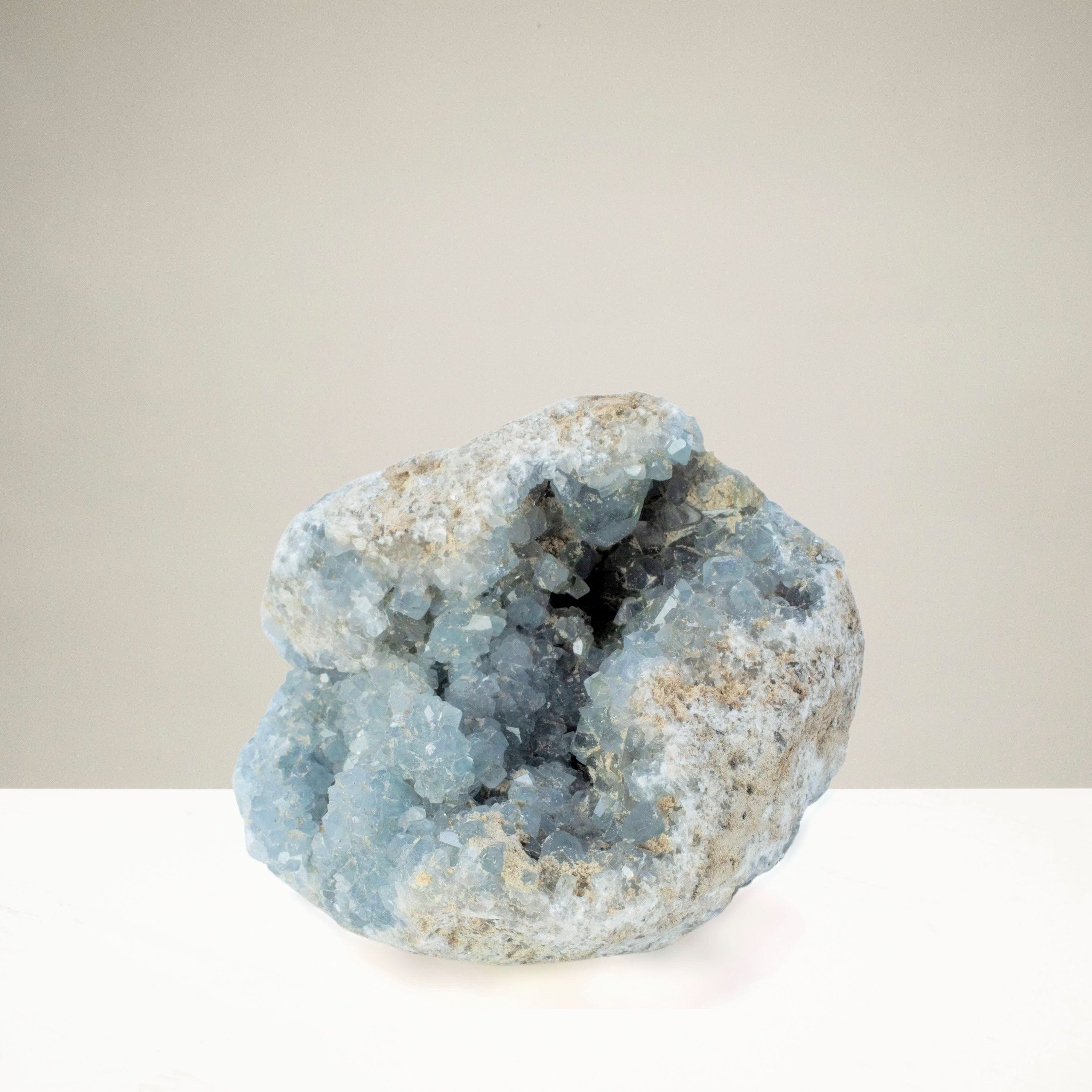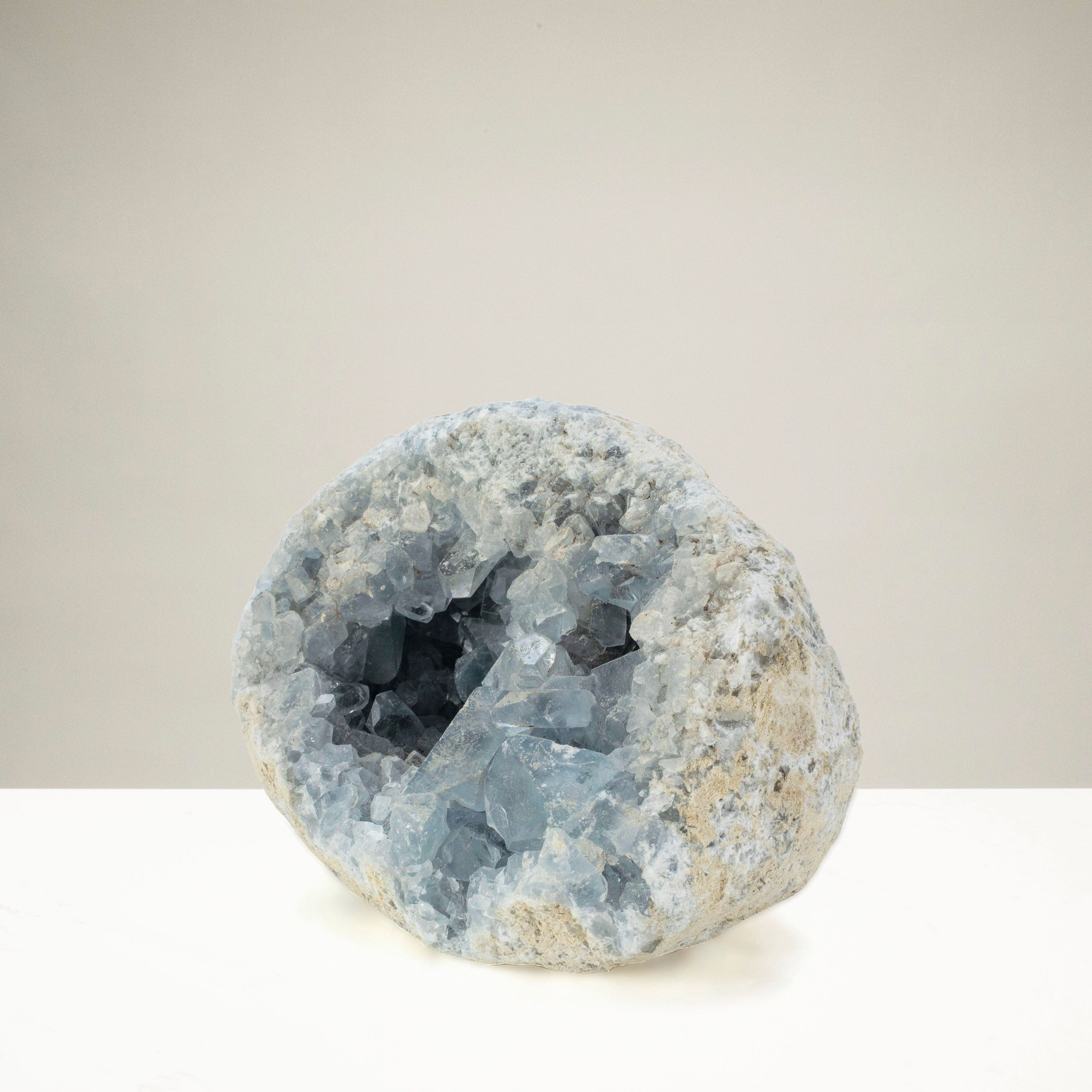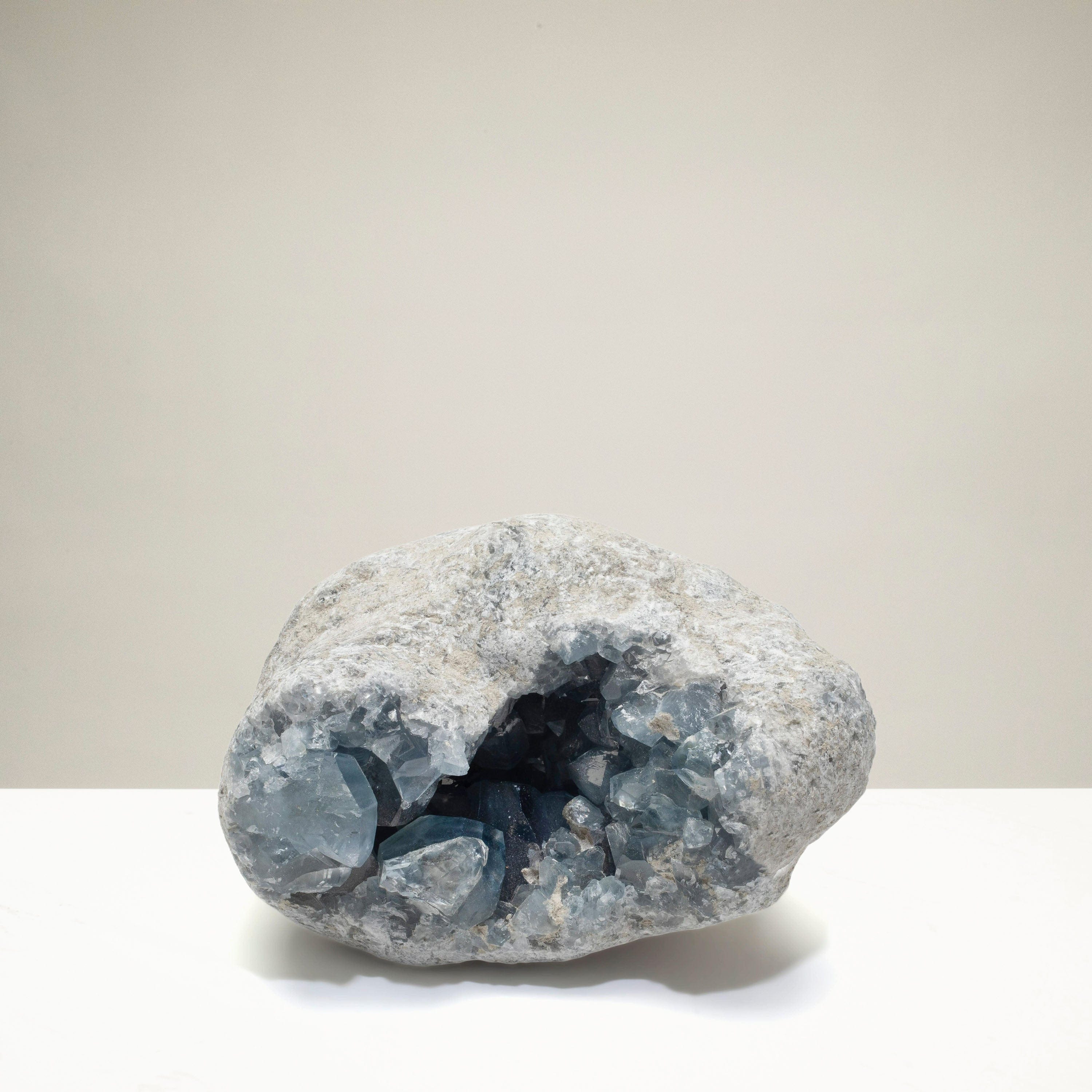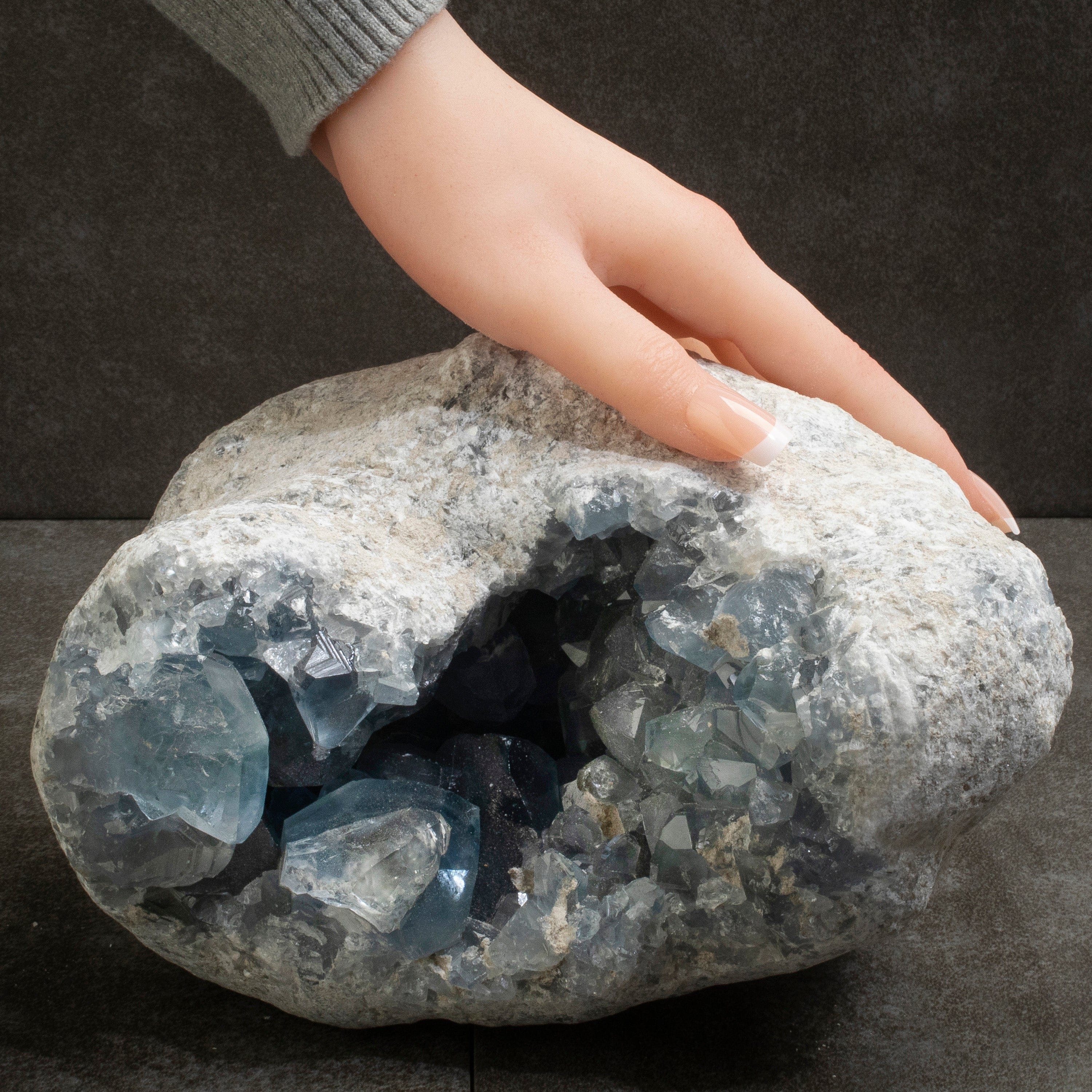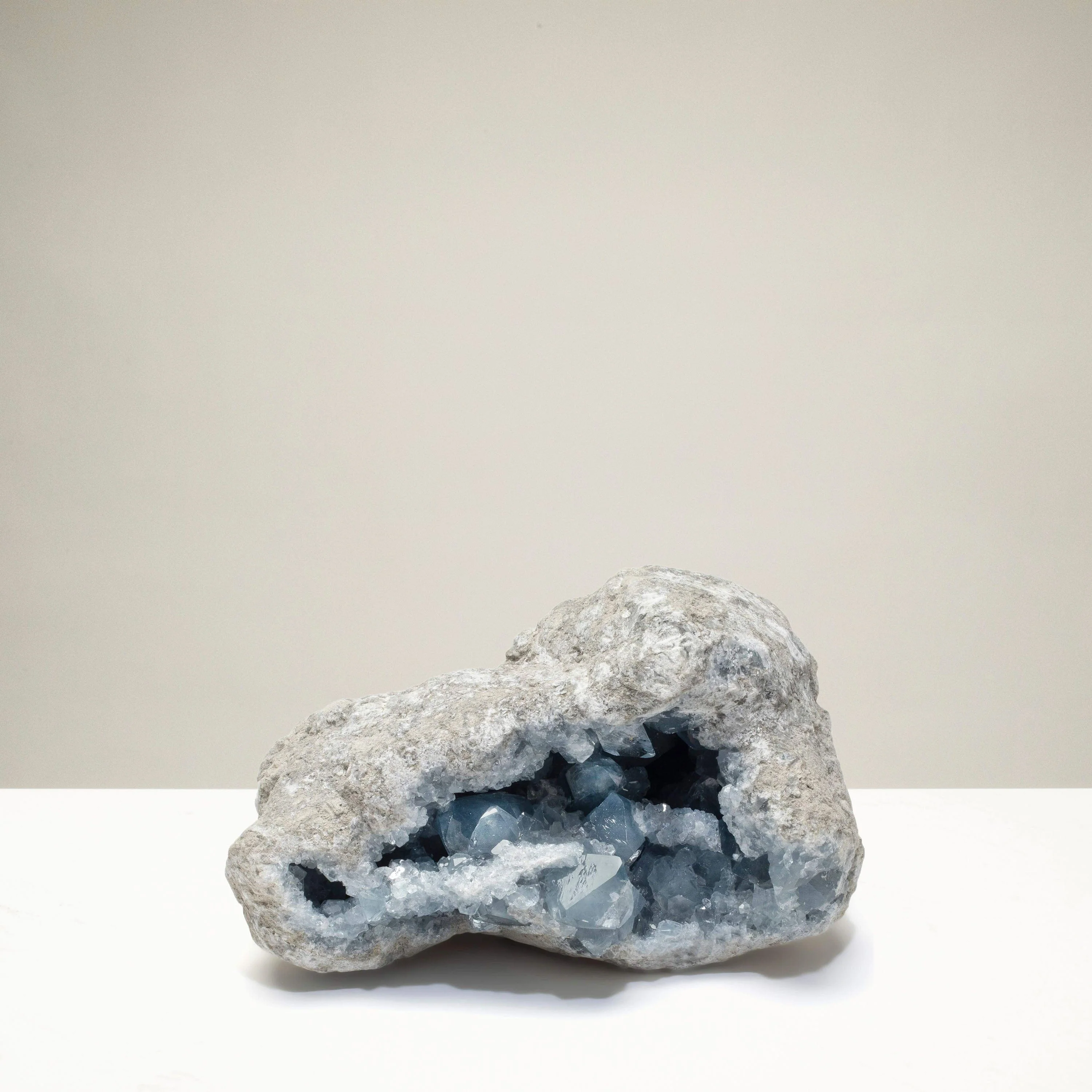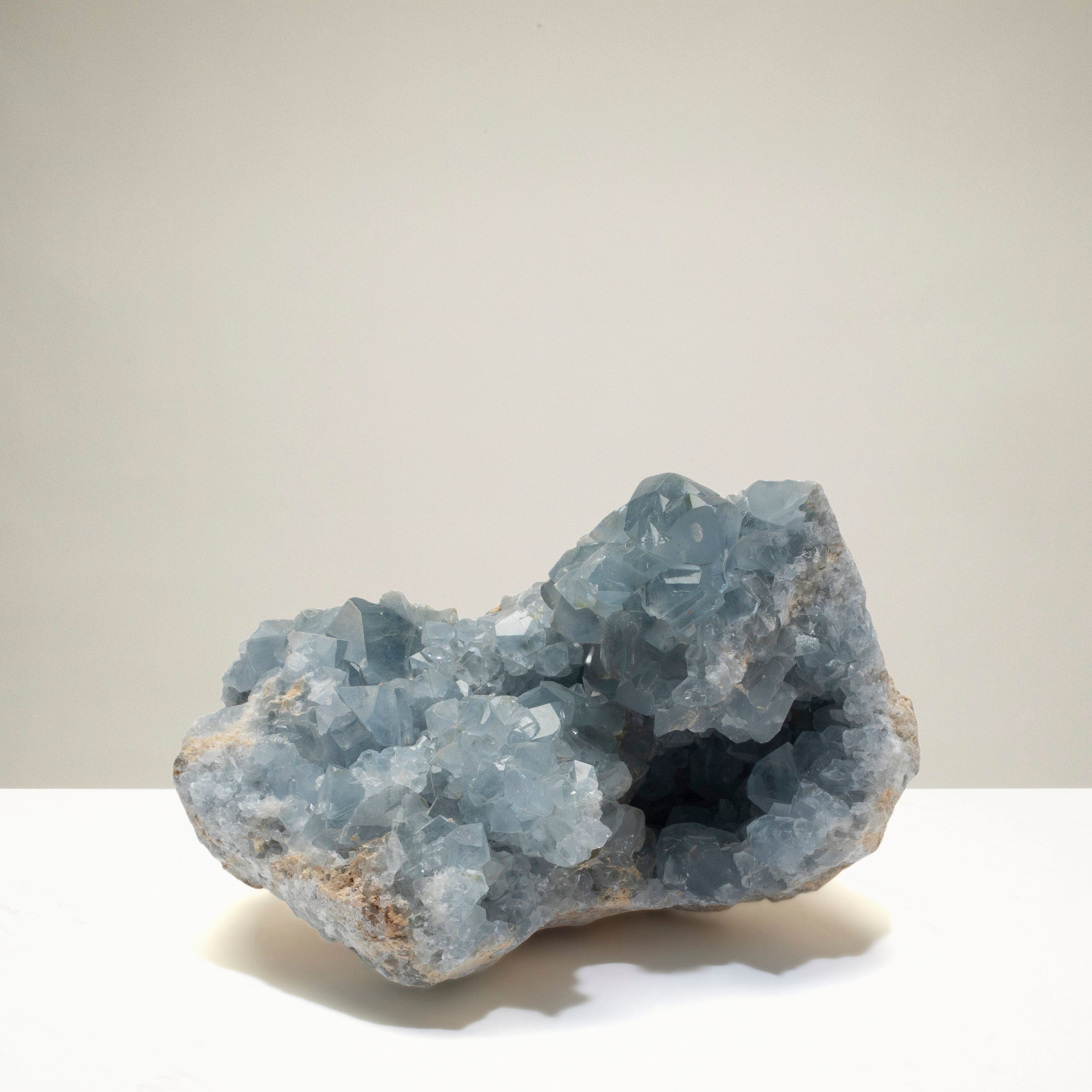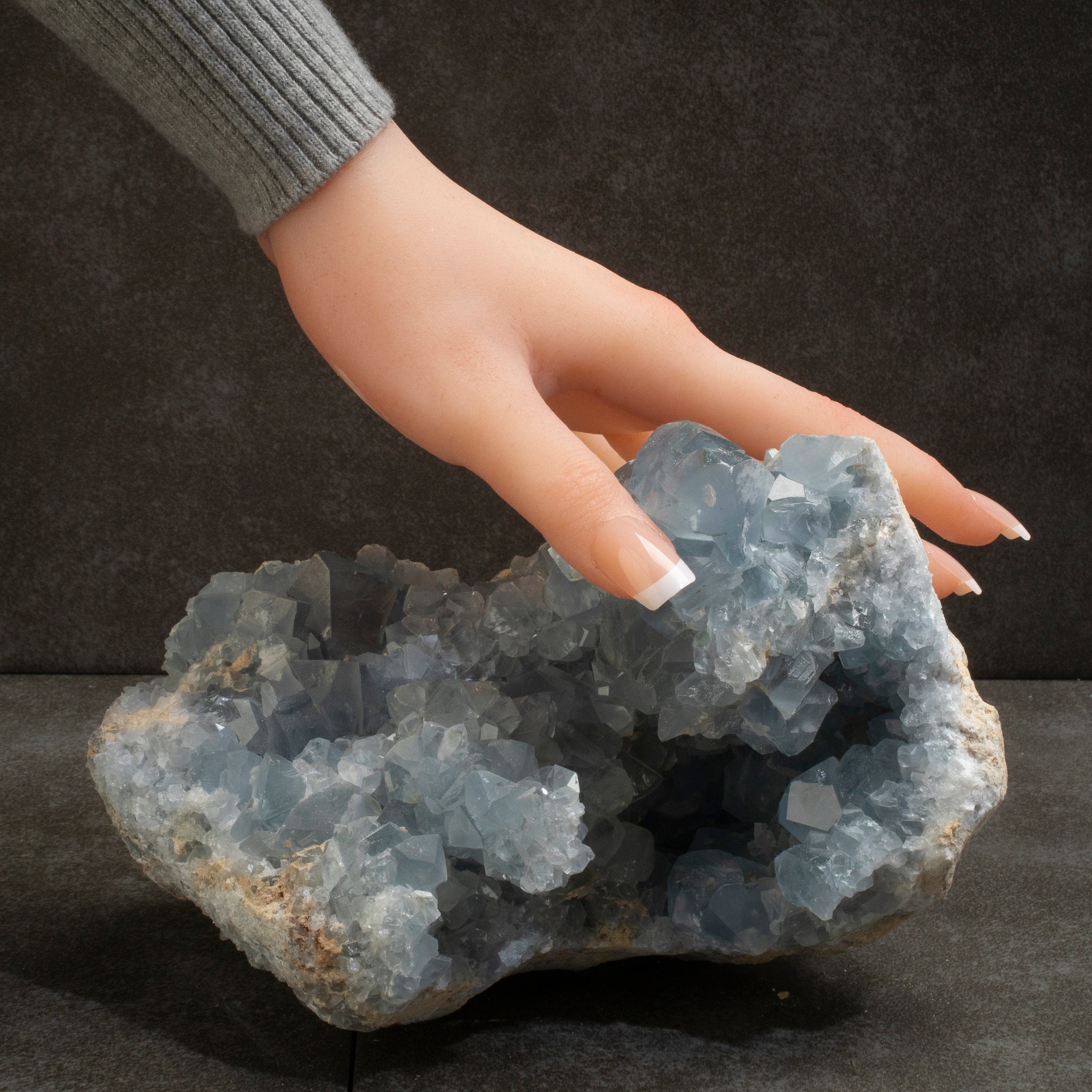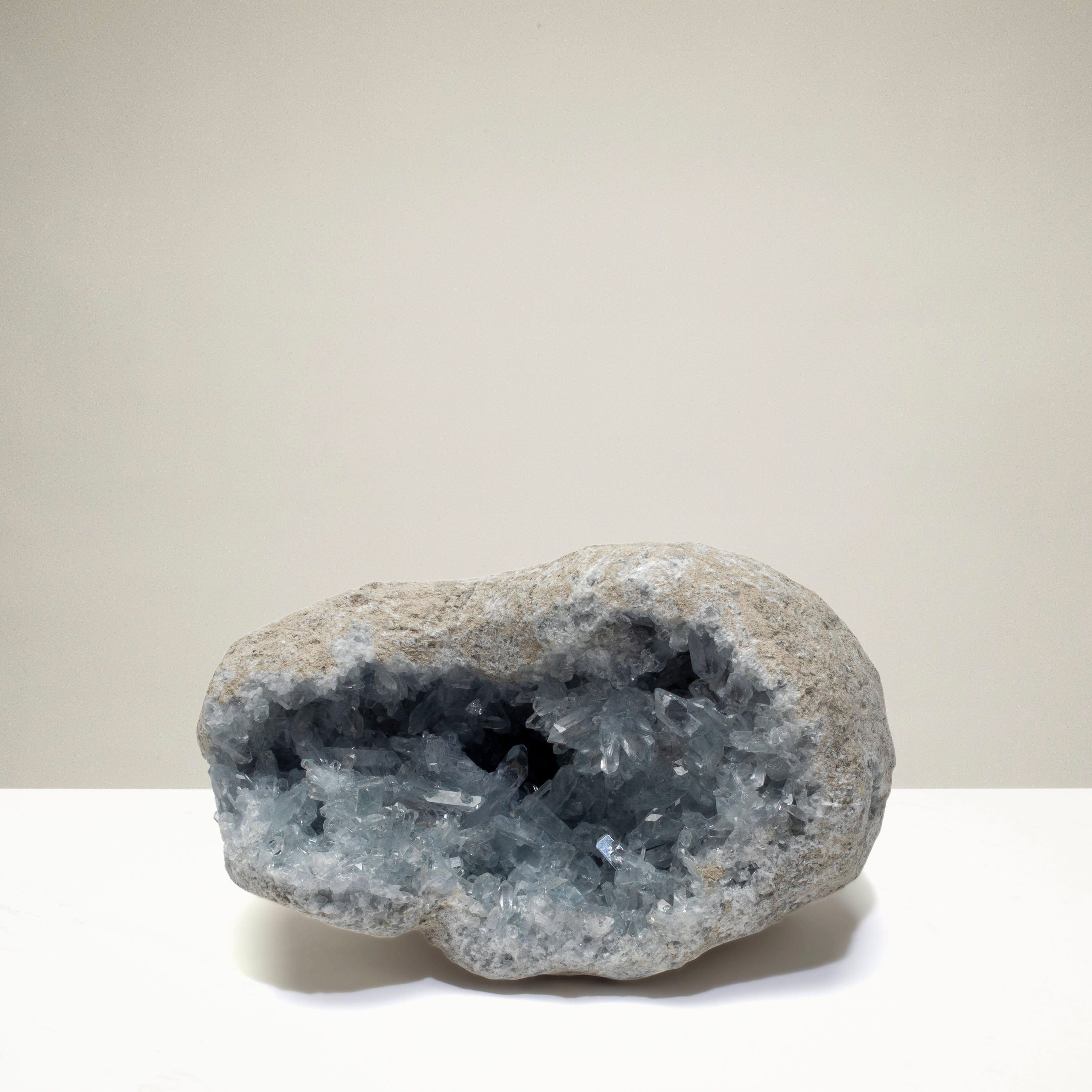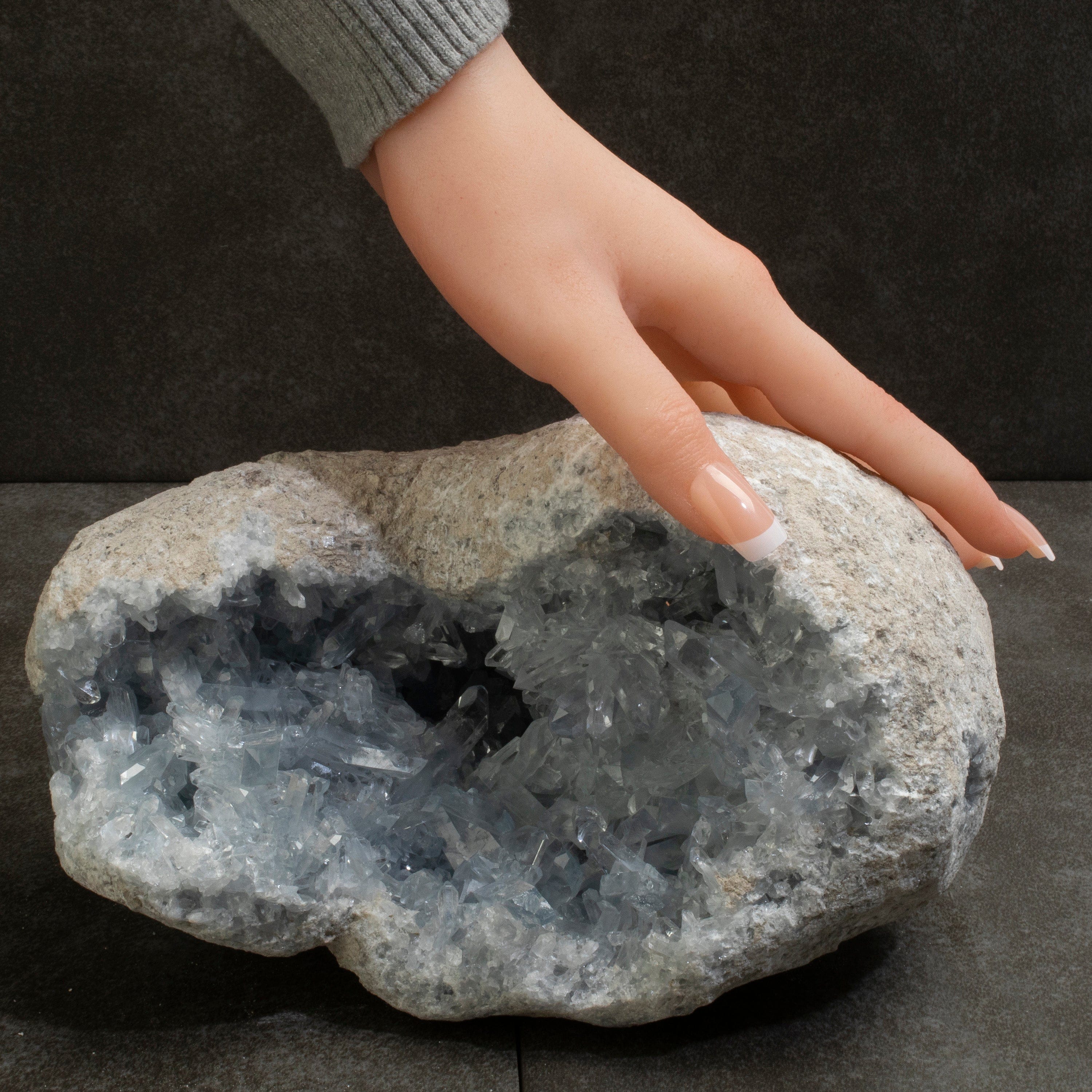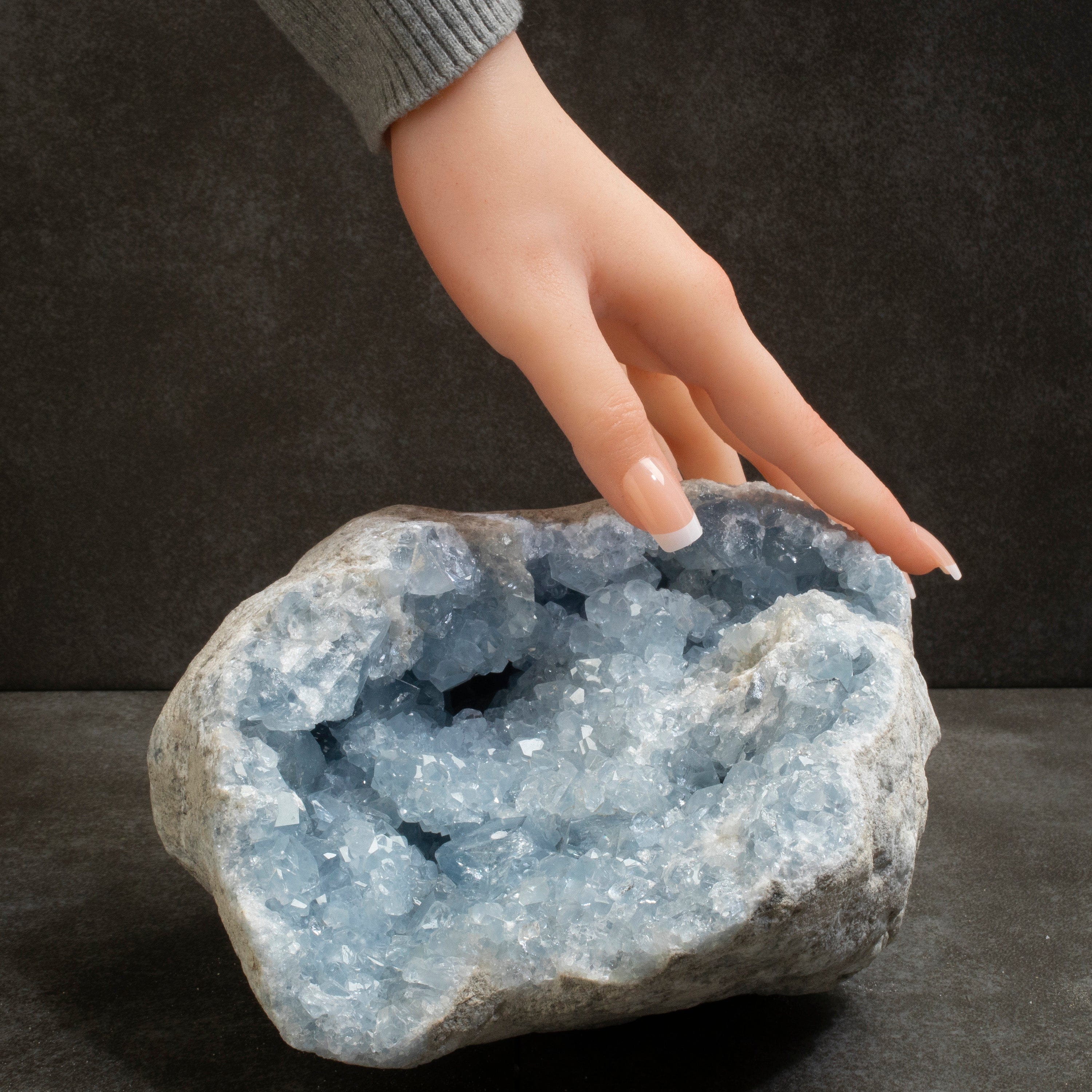
Celestite
Celestite, often referred to as the "stone of the angels" due to its heavenly blue color and spiritual associations, is a mineral with an origin that mirrors its celestial name. Let's embark on a journey to uncover the fascinating story of how this ethereal gem, known for its calming energy, is formed deep within the Earth.
Celestite, a mineral composed of strontium sulfate, derives its captivating blue color from the presence of strontium impurities in its crystal structure. It is a product of sedimentary environments and is typically found in geodes or crystal clusters, giving it its distinct, sparkling appearance. What's truly captivating about celestite is the fact that it can be found in a range of colors, from pale blue to sky blue and even colorless. This variation is due to the presence of other elements and the intensity of natural radiation in its formation environment.
Celestite's formation primarily occurs in sedimentary rock layers, particularly in areas with deposits of evaporite minerals. Over thousands to millions of years, these layers accumulate, and as water dissolves various minerals, strontium and sulfate ions come together to form celestite crystals. The slow and steady process of precipitation leads to the growth of these stunning blue gems within cavities and geodes. The result is a mineral that not only holds a serene, heavenly beauty but is also regarded for its spiritual and metaphysical properties, often used in meditation and healing practices. Celestite's formation is a testament to the Earth's ability to create otherworldly beauty through the patient workings of time and nature.
Celestite, a mineral composed of strontium sulfate, derives its captivating blue color from the presence of strontium impurities in its crystal structure. It is a product of sedimentary environments and is typically found in geodes or crystal clusters, giving it its distinct, sparkling appearance. What's truly captivating about celestite is the fact that it can be found in a range of colors, from pale blue to sky blue and even colorless. This variation is due to the presence of other elements and the intensity of natural radiation in its formation environment.
Celestite's formation primarily occurs in sedimentary rock layers, particularly in areas with deposits of evaporite minerals. Over thousands to millions of years, these layers accumulate, and as water dissolves various minerals, strontium and sulfate ions come together to form celestite crystals. The slow and steady process of precipitation leads to the growth of these stunning blue gems within cavities and geodes. The result is a mineral that not only holds a serene, heavenly beauty but is also regarded for its spiritual and metaphysical properties, often used in meditation and healing practices. Celestite's formation is a testament to the Earth's ability to create otherworldly beauty through the patient workings of time and nature.
Shop our Celestite Geodes collection
Natural Celestite Crystal Cluster Geode
Sale price$45.00
Natural Celestite Crystal Cluster Geode - 3.5 in.
Sale price$65.00
Natural Celestite Crystal Cluster Geode - 5 in.
Sale price$150.00
Natural Celestite Crystal Cluster Geode from Madagascar - 8.5 in.
Sale price$625.00
Natural Celestite Crystal Cluster Geode from Madagascar - 9 in.
Sale price$625.00
Natural Celestite Crystal Cluster Geode from Madagascar - 8.5 in.
Sale price$375.00
Natural Celestite Crystal Cluster Geode from Madagascar - 8.5 in.
Sale price$400.00
Natural Celestite Crystal Cluster Geode from Madagascar - 7 in.
Sale price$425.00


